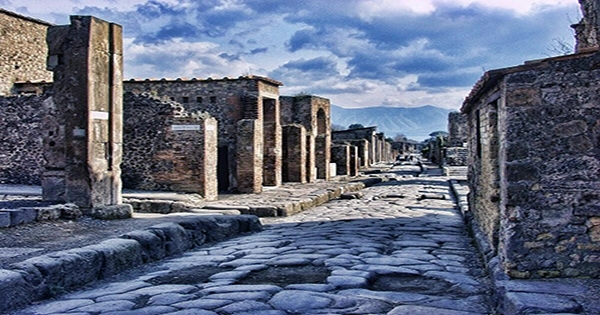Scientists have mapped the genome of a guy who died on a dreadful day in 79 CE when Mount Vesuvius showered wrath down on Pompeii. This is the first successfully sequenced genome of a human who perished in Pompeii, according to the journal Scientific Reports. Dr. Gabriele Scorrano, principal study author from the Lundbeck Foundation GeoGenetics Centre at the University of Copenhagen, told IFLScience, “The person appears quite similar to other Imperial Roman Age genomes we have accessible – but with a twist.”
The skeleton was discovered in the early twentieth century in Pompeii’s “House of the Craftsman” with another person subsequently identified as a tiny lady in her 50s. The male skeleton seems to be roughly 1.64 meters tall (around 5 foot 4 inches) and between 35 and 40 years old at the time of his death, according to the initial examination.
The scientists sought to extract and sequence DNA from sections of both skeletons’ heads. They weren’t able to get much genetic material from the woman, but they did better with the male. Scientists discovered that his DNA shared numerous similarities with present central Italians and other people who lived in the area during the Roman Empire by delving into his genome. His height is similarly comparable to that of a typical Roman guy of the period.
Other aspects of his genetic make-up, on the other hand, were a bit of a shock. “Some aspects of its genetic profile, such as the Y chromosome and mitochondrial DNA, are quite rare for the period and place.” Dr. Scorrano told IFLScience that both of his lineages were extremely unusual.
“What we think it signifies is that he reflects some Iron Age genetic variety that was lost after the Roman Empire owing to the uniformity of the Italic peninsula.” “The findings at Pompeii demonstrate that there is still much to learn about the genetic variety of the Roman period, as well as the communities that came before them, the so-called Pre-Roman Italic populations,” Scorrano added. “We know very little about them, and even their relationship with the Romans and modern-day Italians is a mystery.”
According to Scorrano, the team was shocked they were able to get their hands on the genome. Working with old genetic material is notoriously difficult since it degrades with time, and it was previously considered that the DNA was rendered unreadable by the volcanic eruption’s tremendous heat. They were able to pull it off, though, due to cutting-edge procedures for ancient DNA extraction and sequencing. Along with human DNA, the researchers discovered DNA sequences common to the Mycobacterium genus, which includes disease-causing Mycobacterium tuberculosis. A thorough examination of his spine should reveal symptoms of tuberculous spondylitis, often known as Pott’s disease, a TB consequence.
“This illness was widespread in Roman times, but it is uncommon in the archaeological record since it seldom causes skeletal alterations,” Scorrano added. “At the time of his death, the man was suffering from it, and most likely suffered from severe back pain, exacerbated by exertion or coughing, and sometimes accompanied by sciatica; muscle contraction, which causes pain, and generalized weakness, particularly in the lower limbs, limits mobility of those affected.” Even before he died about 2,000 years ago in a whirlwind of scorching hot ash and smoke from Mount Vesuvius, it appears that he had a rather unhappy existence.
















